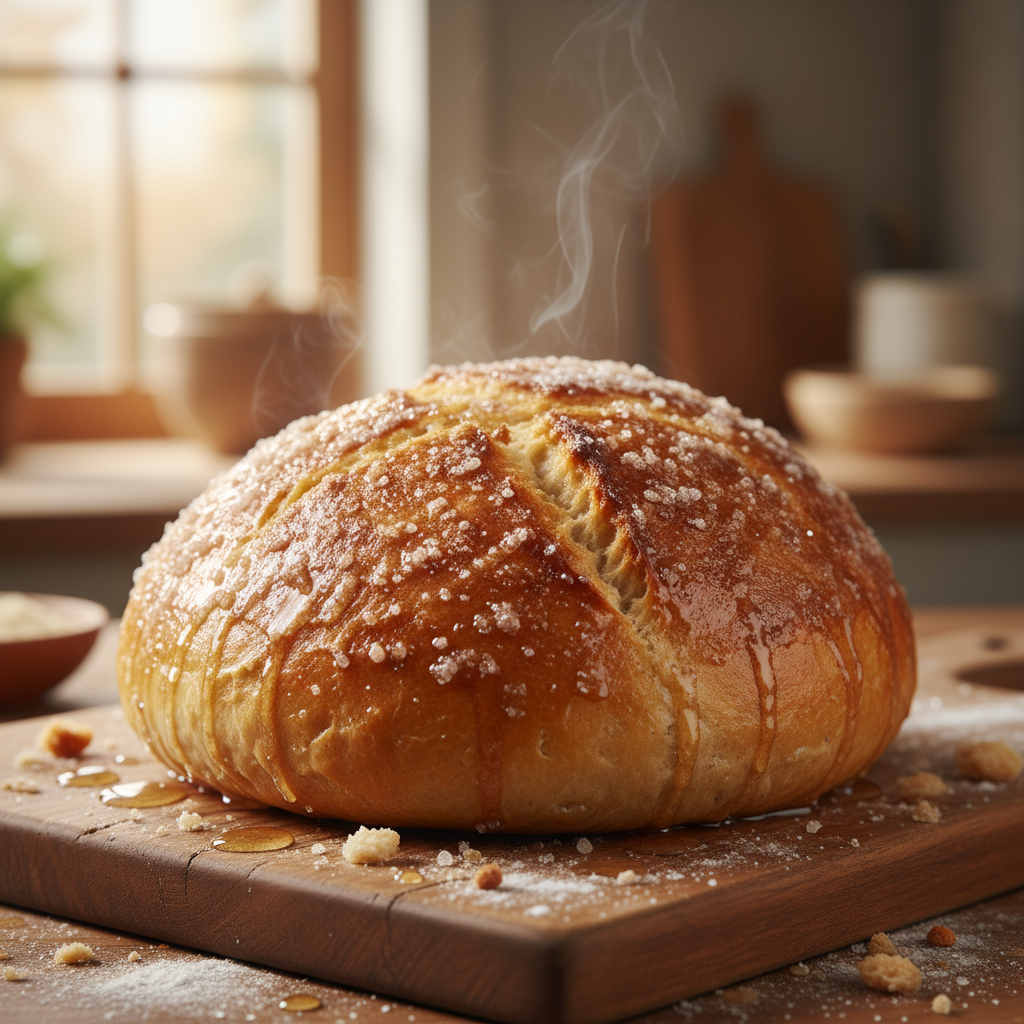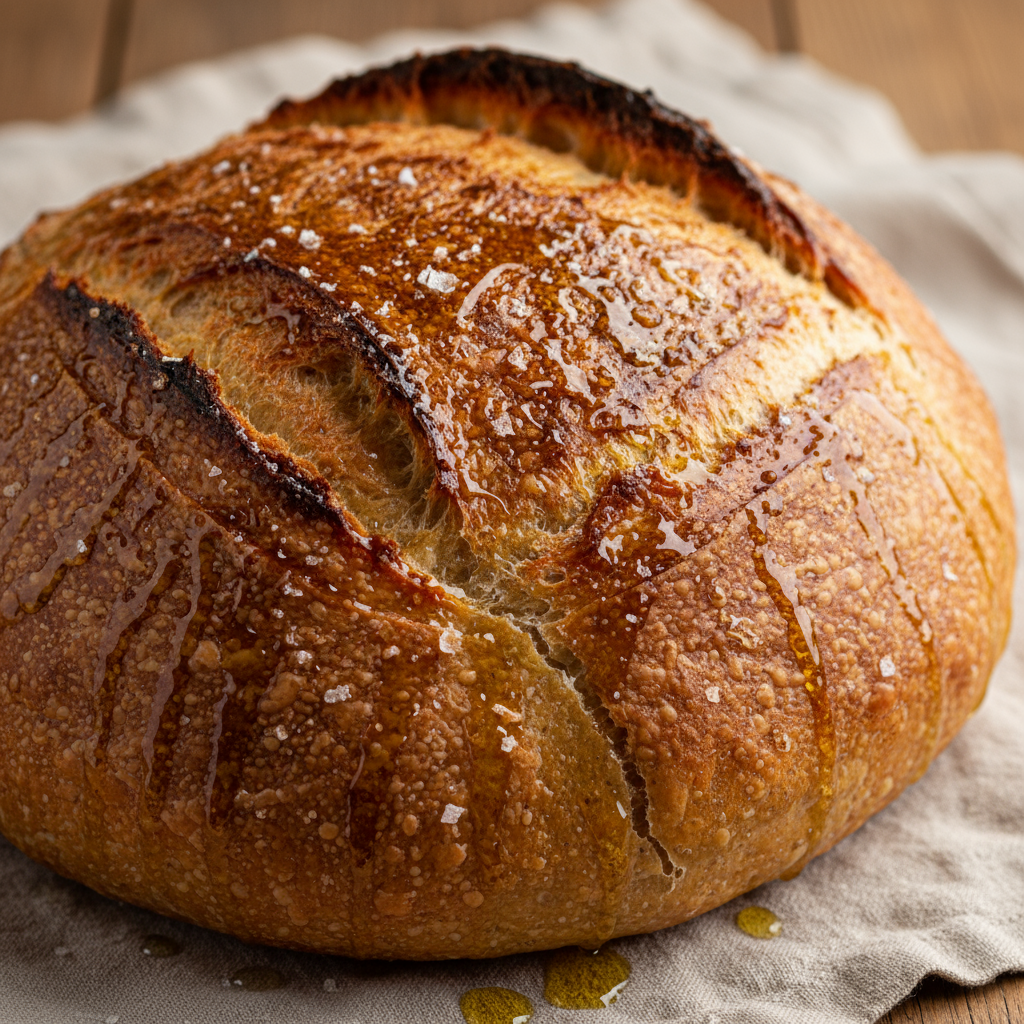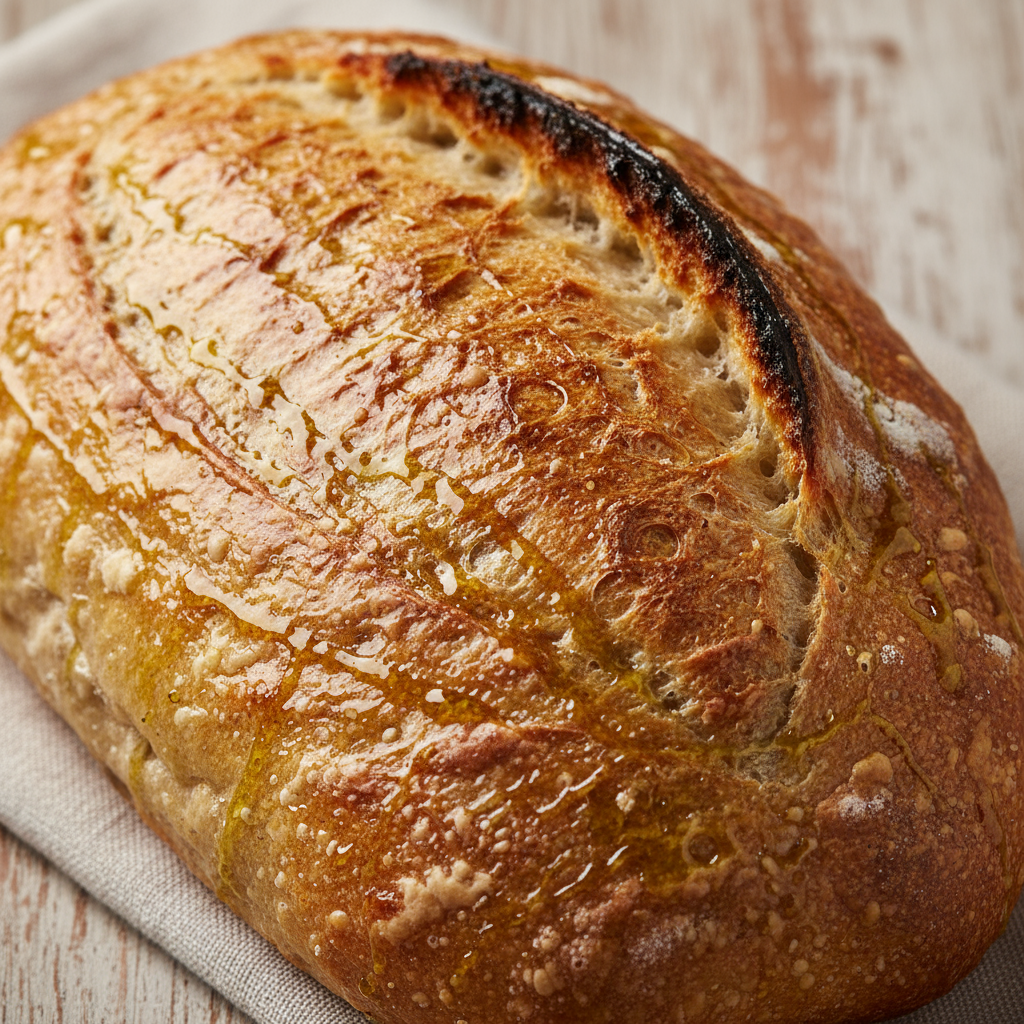Glazing isn’t just about looks; it can add flavor, texture, and even extend freshness. Ready to learn how to glaze bread like a pro? I’ve got the techniques, the science, and the tastiest ideas right here!

Why Glaze Bread? The Magic of the Final Touch
Let’s break it down, bread lovers! Glazing bread serves several key purposes:
- Adds shine and visual appeal
- Locks in moisture for a softer crumb
- Delivers aroma and flavor to the crust
- Helps seeds or toppings adhere
- Creates a desired texture. soft, crisp, or chewy
From sweet challah to crusty sourdough, glazes make a world of difference. Think of them as your bread’s grand finale!
Exploring Different Types of Bread Glazes
Egg Wash for Classic Gloss
The most common glaze, egg wash, delivers a rich, golden shine and a slight crispness. Simply whisk an egg (whole, yolk, or white) with a splash of water or milk. Brush it on before baking for a beautiful, deep color—perfect for brioche, challah, dinner rolls, and savory breads.
Egg Wash Variations:
- Whole egg: Rich color and gloss
- Egg yolk with milk: The deepest sheen
- Egg white with water: Pale, crisp finish
Milk Wash for Soft, Tender Crusts
Want a pillowy-soft, tender crust? Brush bread with milk or cream before baking. This works wonders on sandwich loaves, white bread, pain de mie, and sweet breakfast breads. Milk also helps toppings stick beautifully.
Water Wash for Crackly Rustic Loaves
Crusty, rustic breads like baguettes and sourdough get their signature crunch from a water glaze. Brush or spray water over the shaped dough before it hits the oven. For extra crackle, you can reapply water halfway through baking!
Butter Glaze for Rich Aroma and Flavor
For subtle shine and melt-in-your-mouth richness, melt butter and brush it over hot bread, fresh out of the oven. Butter glaze softens the crust and adds that heavenly aroma. Use on dinner rolls, cornbread, focaccia, and savory loaves.
Sugar Syrup Glaze for Sweetness
Syrupy glazes (like simple syrup or honey-water) give sweet breads and pastries extra shine and sweetness. Brush onto warm cinnamon rolls, babka, panettone, or fruit bread for a bakery-style finish. Honey or maple syrup glazes work especially well with nut breads and fruit-studded loaves.
Olive Oil Glaze for Mediterranean Flavor
Classic in Italian baking, an olive oil glaze—brushed before and after baking—creates a soft, aromatic crust on breads like focaccia, ciabatta, and herby rolls.
Specialty Glazes for Texture and Color
- Starch Glaze: Boiled starches, like cornstarch water, produce an opaque, chewy crust ideal for rye bread and pretzels.
- Coffee or Tea Glaze: Adds a hint of flavor and a deeper hue to sweet breads and breakfast rolls.
- Glaze with spices: Mix cinnamon, nutmeg, or cardamom into milk or syrup glazes for a custom flavor boost.

How to Use Bread Glaze: Step-by-Step
When to Glaze
- Before Baking: Egg, milk, water, and oil glazes go on proofed dough just before it enters the oven.
- After Baking: Butter, syrup, or honey glazes are typically brushed on while bread is hot and fresh, maximizing absorption for flavor and softness.
How to Apply Glaze Evenly
- Use a pastry brush for smooth, even coverage.
- Be gentle with proofed dough to avoid deflating.
- Don’t overload; too much liquid can pool and cause soggy crusts.
- If glazing after baking, brush quickly while bread is hot.
Glaze and Bread Pairings—What Works Best?
Egg Wash with Challah, Brioche, and Dinner Rolls
Achieve that bakery-style shine and deep color your guests will love. Egg wash also helps seeds and toppings (poppy, sesame, herbs) stick to the surface.
Milk Wash for Soft White Bread and Sweet Buns
If you want a tender, golden crust or to glue streusel and sugar toppings onto sweet buns, milk wash is your best friend!
Water Glaze for Artisan Crusty Breads
Maximize crunch and create that crackly exterior you crave in rustic sourdough and French baguettes. Mist or brush water generously just before baking.
Butter Glaze for Rolls, Cornbread, and Focaccia
Out of the oven, a quick swipe of butter elevates plain dinner rolls and soft sandwich loaves. For cornbread and focaccia, butter adds depth and softness.
Check out one of my favorite focaccia glazes of all time right here.
Sweet Syrup Glaze for Celebration Breads
Use simple syrup, honey-water, or fruit preserves to finish celebratory breads like panettone, stollen, or babka. This adds gloss, flavor, and a luxurious bite.
Olive Oil Glaze for Mediterranean Breads
Focaccia sings with olive oil—drizzle over hot bread, then sprinkle with sea salt and herbs. Ciabatta and artisanal rolls also love a touch of extra virgin olive oil.
Starch Glaze for Rye and Pretzel Breads
Rye bread’s classic look comes from a cornstarch glaze that produces a slightly rubbery, chewy crust. Pretzels get their iconic look from a baking soda bath or starch glaze.
Glaze Infusions for Creative Touches
Add vanilla, citrus zest, coffee, or even cocoa powder to glazes for a subtle flavor shift. Great for breakfast breads and brunch treats.
Advanced Techniques You Can Use For Layering and Decorative Glazes
Exactly how fancy do you want to get? Multiple glazes can be used together for both look and taste.
- Double Glazing: Brush an egg wash pre-bake, then finish with a sugar syrup post-bake for ultra shine and flavor.
- Decorative Glazing: Apply two kinds of glaze for color contrast, like egg wash on most of the loaf and a milk glaze for lighter decorative stripes.
Common Bread Glazing Mistakes… and How to Fix Them
- Soggy Crust: Used too much glaze or brushed after baking when bread was cold. Fix by reducing glaze quantity and brushing while bread is hot.
- Uneven Shine: Missed spots with the brush. Rotate bread and use long, even strokes.
- Dough Deflation: Pressed too hard. Use a soft brush and delicate touch!
- Splattered Glaze: Flicked the brush. Dip excess off, then brush gently.
Pro Tips for Bread Glaze Success
- Always use a clean pastry brush!
- For crispier crusts, combine glazes: water before baking, butter after.
- Let glazes cool slightly before applying (except butter syrup, which should go onto hot bread).
- For sweet breads, consider glaze infusions for a flavor punch.
- Don’t rush, take time for even coverage.
Bread Glaze Q&A
Can I make bread without glaze?
Absolutely! Glazing is optional but elevates appearance and flavor.
Which glaze is healthiest?
Water, milk, and olive oil glazes tend to be lighter; butter and syrup glazes add richness.
Can glazes be vegan?
Yes! Use plant-based milk or oil, skip eggs and butter, try aquafaba (chickpea water) for shine.
Your Bread Baking Is About to Get a Whole Lot Tastier
Whether you love a glossy challah, crave a crusty baguette, or want a sweet, sticky cinnamon loaf, glazing is an easy upgrade you’ll never skip again. Experiment with classics, play with flavors, and watch your loaves turn bakery-beautiful with a simple brush stroke.
It’s time to glaze and amaze!
Happy Baking!

